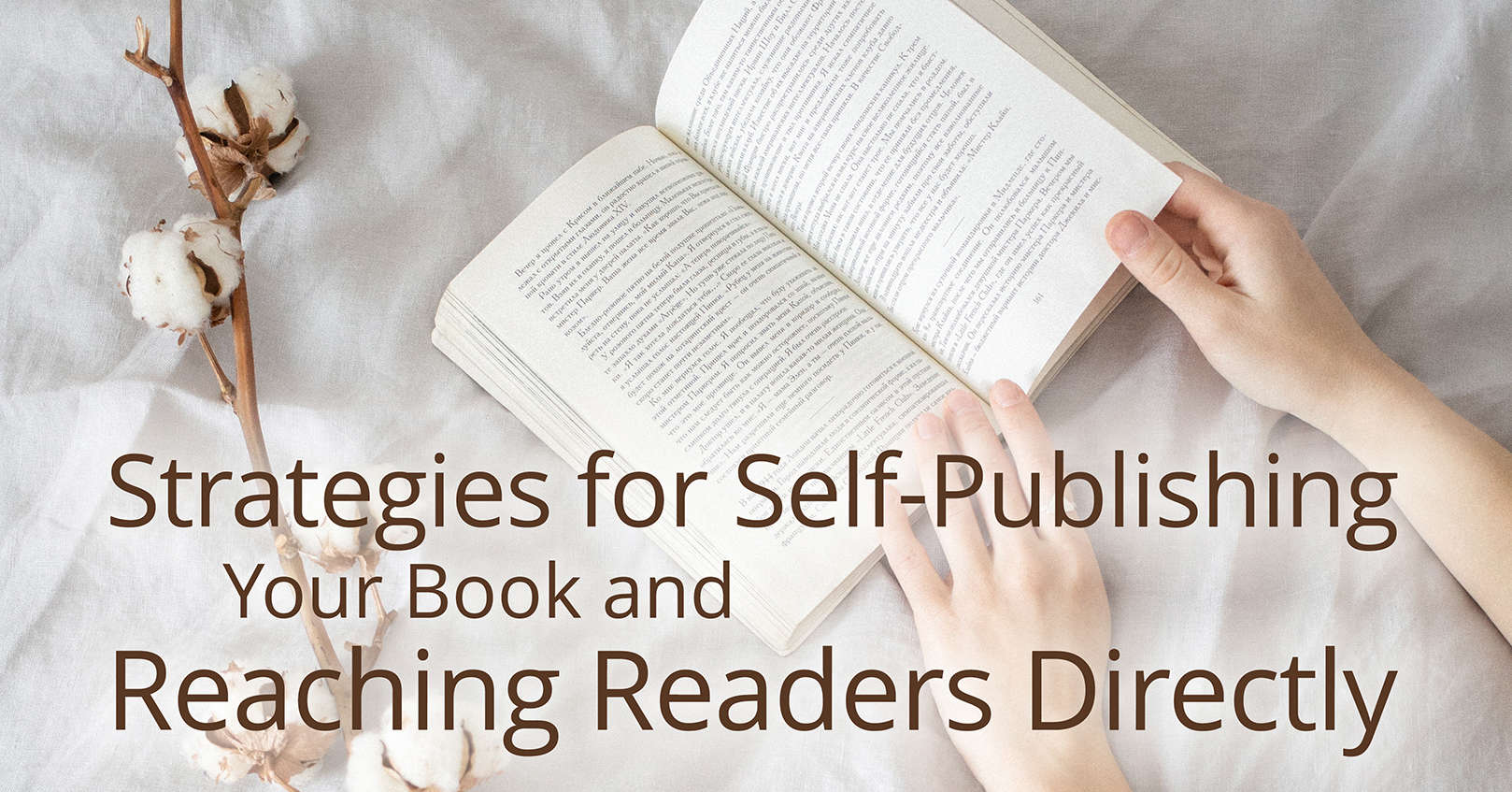
Self-Publishing 101: Authors’ Responsibilities When They Chose to Self-Publish
While self-publishing allows authors to have full control over the entire publishing process, including editing, formatting, cover design, distribution, and marketing, it also means that authors have to learn how to get all of these things done.
Most authors dream of writing incredible books that inspire readers; they don’t often dream of all the other tasks and responsibilities that come with being an author. In self-publishing, authors take on the roles traditionally handled by publishing professionals, such as acquiring editing and design services, handling the production of the book, and implementing marketing and promotion strategies.
With the advancement of digital technologies and the rise of online platforms, self-publishing has become increasingly accessible and popular among authors. Self-published authors are also finding more success than many self-published authors have had in the past when the subject of self-publishing was still taboo.
Self-publishing offers several advantages to authors. First and foremost, it provides creative freedom and control over the content, cover design, pricing, and release schedule of the book. Authors retain all the rights to their work and have the flexibility to make changes and updates as needed.
Additionally, self-publishing allows authors to retain a higher percentage of their book’s profits compared to traditional publishing, where authors typically receive royalties. It also offers the opportunity to reach a global audience through various online platforms and retailers.
Self-published authors have the option to publish their books in multiple formats, including ebooks, print-on-demand paperbacks, and even audiobooks. They can choose to distribute their books both digitally and in print, catering to the preferences of different readers.
However, self-publishing also comes with its challenges. Authors must invest time, effort, and resources in editing, cover design, formatting, and marketing to ensure their books meet professional standards and gain visibility in a crowded marketplace. Self-published authors are responsible for building their author platform, engaging with readers, and promoting their work effectively.
It’s important for self-published authors to approach the process with professionalism, invest in quality services, and continuously improve their writing and marketing skills. Embracing the entrepreneurial aspect of self-publishing and staying abreast of industry trends and best practices can increase the chances of success.
Overall, self-publishing offers a viable path for authors to bring their books to market, retain creative control, and potentially find success in the publishing industry. With the right mindset, dedication, and a focus on delivering quality content, authors can leverage self-publishing to share their stories with the world and connect directly with readers.
How Self-Published Authors Can Reach Readers Directly
Self-publishing has revolutionized the world of book publishing, offering authors greater control, flexibility, and direct access to readers. If you’re considering self-publishing your book and want to reach readers directly, here are some effective strategies to help you navigate the self-publishing journey:
1. Quality Is Key
Ensure your book meets professional standards in terms of writing, editing, formatting, and cover design. Invest in professional editing services to polish your manuscript and create a visually appealing cover that catches readers’ attention.
One of the biggest hurdles to self-publishing right now is that self-published books aren’t as high quality as professionally published books or that self-published authors are authors that are cutting corners or that were not good enough to be picked up by a traditional publisher.
To help fight these stereotypes, self-published authors need to ensure that they are still creating works that would stand up to the high standard of traditional publishing. Cutting corners on revising, editing, book formatting, and cover design will not do you or your fellow authors any favors.
In fact, some platforms may take down your book if readers report too many errors with it. So, to avoid all these unpleasant things, focus on quality.
2. Build an Author Platform
Establishing a strong online presence is crucial for self-published authors. Create an author website or blog where readers can learn more about you and your books. Leverage social media platforms like Facebook, X, Instagram, and Goodreads to engage with your audience and build a loyal following.
Having a loyal following and community is crucial to your long-term success as an author. A loyal fan will be the first in line to buy your newly released novel. They’ll write raving reviews and share your books with their friends and family. A loyal reader will not only read one of your books, but they’ll read every book you release during your writing career.
Loyal fans and incredibly important and valuable to authors. So take the time to engage with your readers and build on online community where they feel seen and heard.
3. Engage in Pre-Launch Marketing:
Start marketing your book well in advance of its release. Generate excitement by sharing behind-the-scenes updates, cover reveals, and snippets from your book. Offer pre-order incentives to incentivize readers to purchase your book ahead of time.
We cover a whole bunch of pre-launch marketing and tactics for newly released books in this article.
4. Leverage Email Marketing
Much as we mentioned above with building an online platform, email marketing is still huge for authors. Readers who sign up for your email list are often saying that they like your work and WANT to be notified when you release something new. They are essentially giving you direct permission to sell your next book to them.
You can work on building an email list of interested readers by offering free sample chapters and exclusive content like novellas, in exchange for a reader’s email. BookCave offers a subscriber magnet program where they help authors set up a subscriber magnet and even cross-promote their subscriber magnet with other offers. And for a limited time, they’re providing this service for free!
Use email marketing platforms to send regular updates, book launch announcements, and promotional offers to your subscribers.
5. Collaborate with Influencers
Reach out to bloggers, book reviewers, and social media influencers in your genre. Offer them free copies of your book in exchange for honest reviews or features on their platforms. Their support can significantly expand your book’s visibility and reach.
Take note though that oftentimes simply giving them a free book does not guarantee that you’ll get a review or feature on their platform. If an influencer ends up not liking your book, they usually just won’t say anything about it and that means they weren’t a good match for you and your writing.
There are some influencers who will work on a paid contract and feature any book for the right price, but often the subscribers to these influencers aren’t as loyal as the ones who follow influencers who only promote books they truly enjoyed.
6. Utilize Amazon’s Kindle Direct Publishing (KDP)
Amazon’s KDP platform is a popular choice for self-published authors. Take advantage of KDP’s tools and resources to format and publish your ebook and paperback. Optimize your book’s metadata and keywords to improve discoverability on the Amazon marketplace.
7. Consider Multiple Formats
Make your book available in various formats, including ebook, paperback, and audiobook. Catering to readers’ preferences increases the chances of reaching a broader audience.
If you can’t afford to do a full print run, you can use print-on-demand services to provide a hardcopy form of your book. If you don’t think you can afford an audiobook narrator, you can narrate your book yourself. There are generally options for you, even as a newly self-published author, to take advantage of these different platforms.
8. Participate in Virtual Book Tours and Events
Connect with other authors, bloggers, and book communities to organize virtual book tours, author interviews, and online book launch events. These virtual engagements can generate buzz and attract readers to your work.
They often also allow you to cross-promote your work with their audiences. This is a great way to expand your reach as a self-published author.
9. Engage with Reader Communities:
Join online forums, book clubs, and social media groups related to your genre. Engage in discussions, provide value, and subtly promote your book when appropriate. Building genuine connections with readers can lead to word-of-mouth recommendations and long-term support.
Remember, you get back in life what you give. Don’t expect that people will come flocking to your communities to help you if you’re not an active voice and providing others with something of help and value too. Participating in online communities is a two-way street.
10. Monitor and Adjust
Continuously track your book’s performance using sales data, reader feedback, and reviews. Analyze what strategies are working and adjust your marketing efforts accordingly. Experiment with different promotional tactics, pricing strategies, and advertising campaigns to maximize your book’s exposure.
Self-publishing is a journey that requires persistence, adaptability, and continuous learning. Embrace the opportunity to take control of your publishing career, experiment with different marketing strategies, and connect directly with your readers. With dedication and strategic efforts, you can effectively self-publish your book and reach a wide audience of enthusiastic readers.
Are you a self-published author? Let us know in the comments below!
















Comments